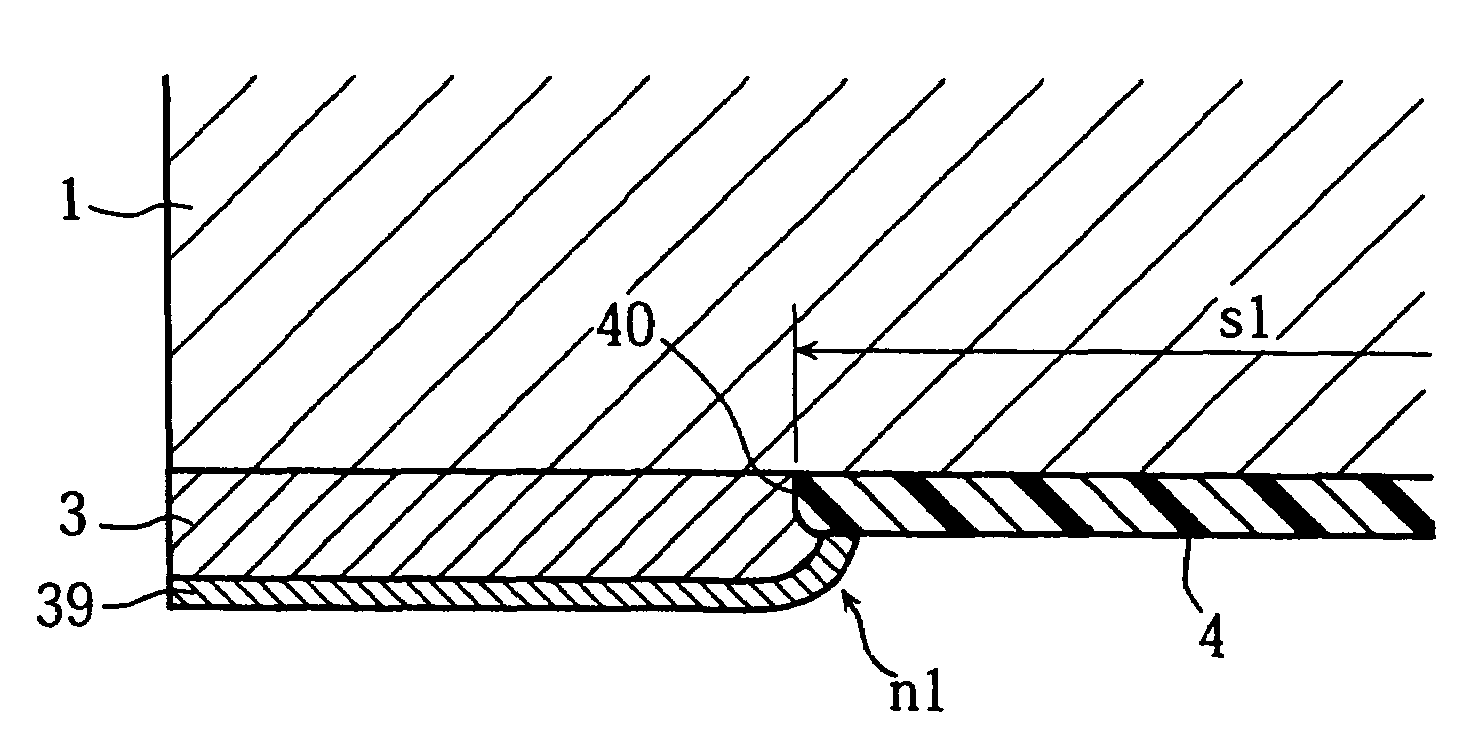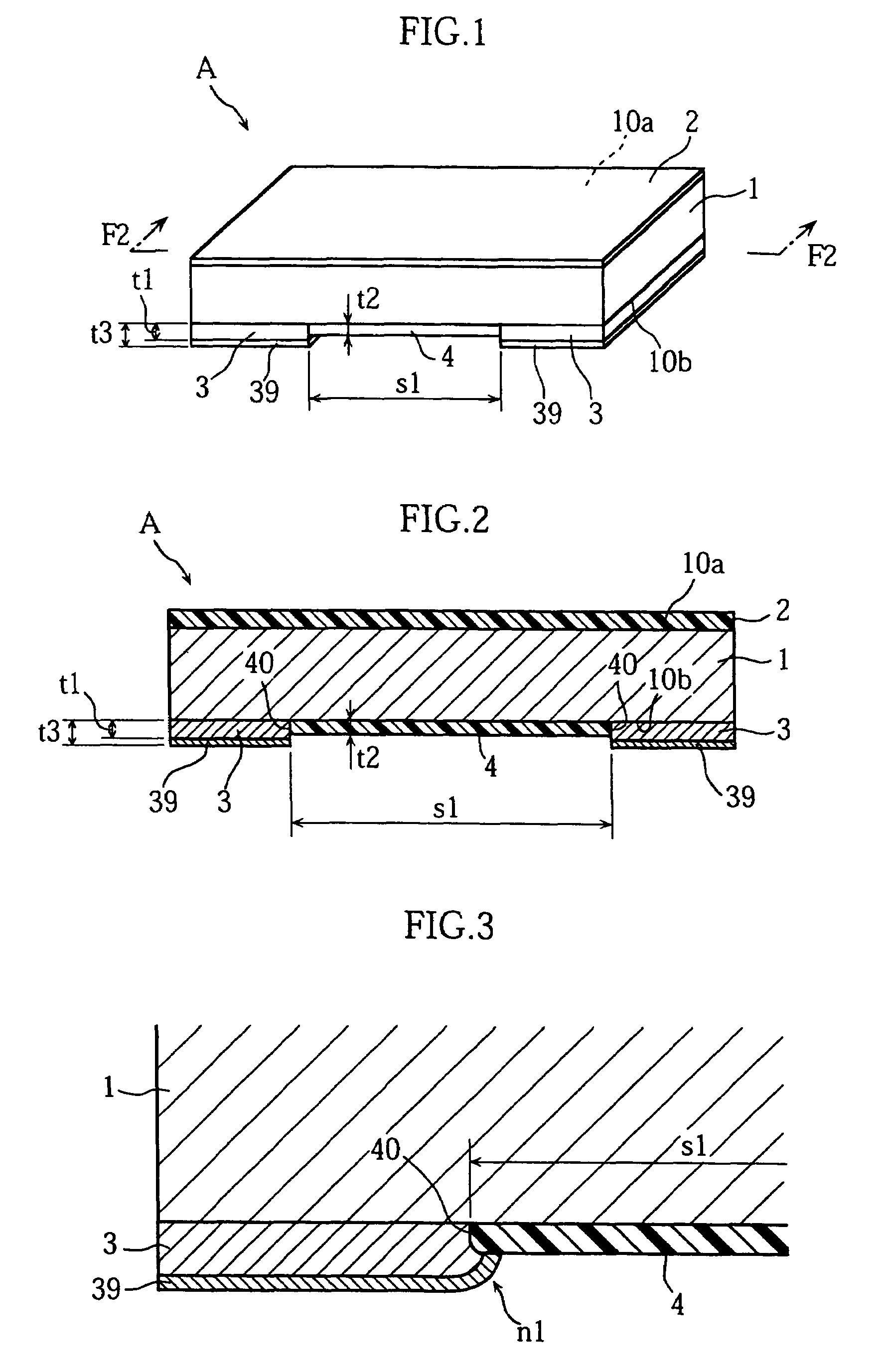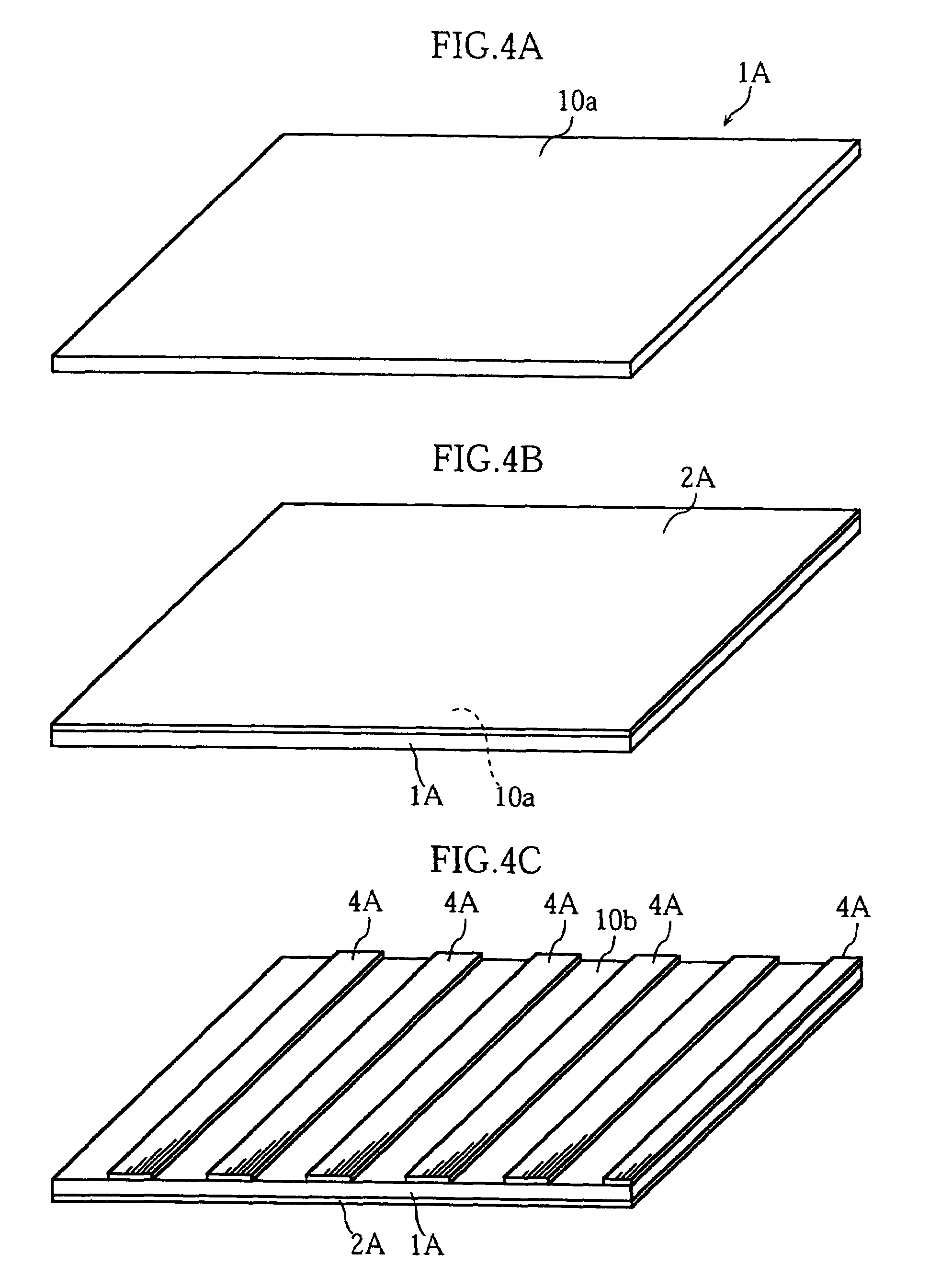Chip resistor and manufacturing method therefor
a technology of resistors and manufacturing methods, applied in the direction of resistor chip manufacturing, resistor details, resistors adapted for applying terminals, etc., can solve the problems of increased manufacturing cost, unavoidable certain level of error, and difficult generalization of making such an operational setting accurately, etc., to achieve the effect of convenient manufacturing
- Summary
- Abstract
- Description
- Claims
- Application Information
AI Technical Summary
Benefits of technology
Problems solved by technology
Method used
Image
Examples
first embodiment
[0048]FIG. 1 through FIG. 3 show a chip resistor A according to the present invention. As shown in FIG. 1 and FIG. 2, the chip resistor A includes a resistive element 1, an overcoat layer 2, a pair of electrodes 3, and an insulating spacer 4.
[0049]The resistive element 1 is a rectangular metal chip. As will be understood from FIG. 2, the resistive element 1 has a uniform thickness. The resistive element 1 is made of e.g. a Cu—Mn alloy, a Ni—Cu alloy and a Ni—Cr alloy. Alternatively, the resistive element 1 can be formed of a nonmetal material.
[0050]The overcoat layer 2 is electrically insulating, and covers an upper surface 10a of the resistive element 1. The overcoat layer 2 can be formed of epoxy resin by thick-film printing.
[0051]The pair of electrodes 3 are on a back surface 10b of the resistive element 1, and are spaced from each other by a predetermined distance s1. The electrodes 3 can be formed by plating copper on the resistive element 1. Each electrode 3 has a lower surfac...
fourth embodiment
[0072]FIG. 12 through FIG. 14 show a chip resistor according to the present invention (the entire resistor is indicated by a reference code Ac). As understood from FIG. 12 and FIG. 13, the chip resistor Ac includes a resistive element 1′, insulation layers 2′ (2a′, 2b′) and a pair of electrodes 3′.
[0073]The resistive element 1′ has a uniform thickness, and is made of a metal material such as a Cu—Mn alloy, a Ni—Cu alloy and a Ni—Cr alloy. Alternatively, the resistive element 1′ may be non-metal. As shown in FIG. 12, the resistive element 1′ is formed with two recesses 11′ which are spaced from each other by a distance s1′.
[0074]The insulation layer 2′ covers an upper surface 10a′ or a back surface 10b′ of the resistive element 1′. The insulation layer 2′ is made of epoxy resin for example.
[0075]The electrode 3′ is formed on a plurality of surfaces 11A′ of the recess 11′ in the resistive element 1′. Therefore, a distance (a minimum distance) between the two electrodes 3′ is equal to ...
PUM
| Property | Measurement | Unit |
|---|---|---|
| thickness t3 | aaaaa | aaaaa |
| thickness t3 | aaaaa | aaaaa |
| thickness t3 | aaaaa | aaaaa |
Abstract
Description
Claims
Application Information
 Login to View More
Login to View More - R&D
- Intellectual Property
- Life Sciences
- Materials
- Tech Scout
- Unparalleled Data Quality
- Higher Quality Content
- 60% Fewer Hallucinations
Browse by: Latest US Patents, China's latest patents, Technical Efficacy Thesaurus, Application Domain, Technology Topic, Popular Technical Reports.
© 2025 PatSnap. All rights reserved.Legal|Privacy policy|Modern Slavery Act Transparency Statement|Sitemap|About US| Contact US: help@patsnap.com



